a community at the east end of the lake Selbusjøen, southeast of Trondheim
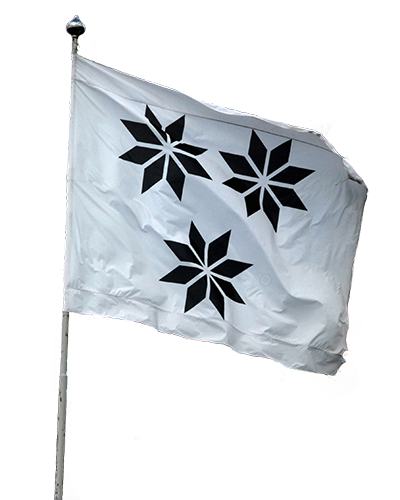
Knitting
All Norwegians – and quite a few foreigners – know the Selbu (sports) knitwear and regard it as something typical Norwegian. The Selbu tradition of knitting a rose pattern with dual yarns, white and black, was initiated in 1857 by a 16 years old girl,

Marit Olsdatter, born 1841 on the farm Gullsetbrua in Selbu (died as Marit Emstad in 1929). Originally this knitwear was essentially for the family and for traditional wedding gifts (actually from the bride to the groom and the male guests!), but during the 1890s the knitting developed into a home industry and a new source of income, reaching an incredible peak between the two world wars. For many years "everybody", including men and children, knitted whenever possible, even when walking from one place to another. The genuine Selbu knitwear is made from the undyed wool of white and black sheep, and the sweaters, stockings, mittens and caps are thus ideal for sportswear. (However, nobody has been sued for using dyed wool of different colours.) The most common motif is a variant of the Selbu Rose  , depicted in the Selbu flag above. (The latter has a four axis symmetry, while the knitted rose usually have a two axis symmetry.)
, depicted in the Selbu flag above. (The latter has a four axis symmetry, while the knitted rose usually have a two axis symmetry.)

A "Selbu troll", almost properly dressed. I don't know why a knitted cap is missing; when winter comes the poor troll is going to develop a terrible headache. This troll is a commercial one; it's carrying a sack with the name of an adjacent grocery store, and apart from the long nose and overall size it does indeed look more like a shop clerk than the trolls we are familiar with.
(2010-07-05)

Art at the town hall: "Morsarvin" (Maternal heritage, 2004), bronze sculpture by Sivert Donali (1931–2010) showing a mother teaching her daughter to knit.
(2009-05-30)

The Selbu church, the oldest part dates back to 1183, but it has been expanded and renovated several times since then. One Sunday in the winter 1857–58 Marit Olsdatter and her sisters came to this church wearing the new mittens and thus attracting the congregation's attention (which embarrassed the sisters). Soon Marit was asked by a lot of women to teach them the new knitting.
(2009-05-30)
Selbu sportswear

Close to the church, in the old priest's residence (built 1745), you'll find the Selbu Village Museum.
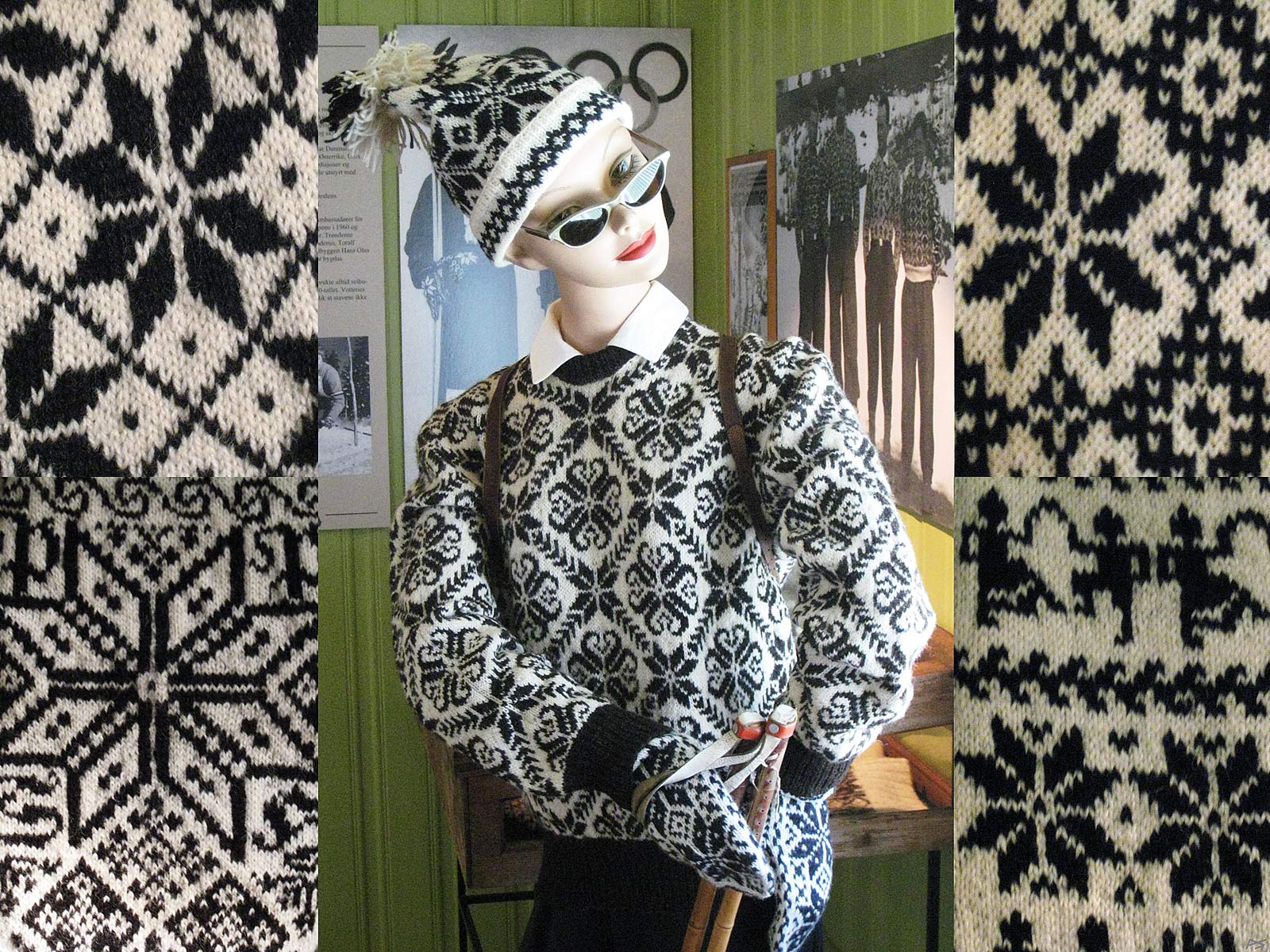
As a part of the village museum we find – surprise! – the Selbu Museum of Knitting. My collage shows some pattern samples.
(2009-08-06)

Another sweater in the museum.
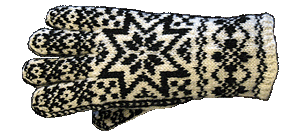
Several years ago I got a pair of woolen gloves from an elderly Selbu lady. Still many Selbu women are knitting for the market. I didn't ask what the lady mentioned did with her work; she seemed to be knitting all the time. Please note the pattern on the fingers. Obviously this is for the advanced ones, and they do it at high speed virtually without looking.

The logo for the 1997 World Championship of Nordic Skiing was derived from the Selbu Rose. The three colours pattern departs from the traditional two colours one, but it's the national colours red-white-blue. The championship took place in Trondheim.
Millstones
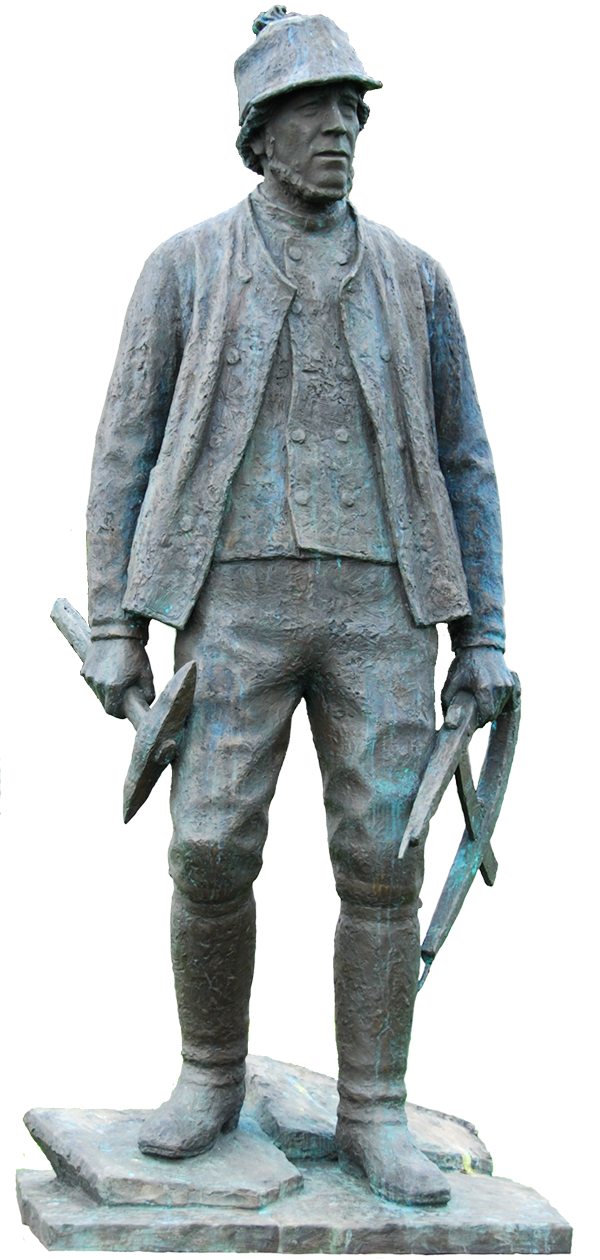
A statue at the Selbu administration centre, "Felkar'n" by Kristofer Leirdal, 1991: A millstone quarrier with his pick hammer and pair of compasses.
About twenty kilometres east of Selbu, in a mountain area that is now the Skarvan and Roltdalen National Park, rock suitable for millstones was found many hundred years ago. It's biotite schist with imbedded hard grains of staurolite and garnets. While the schist wears off slowly, the grains tend to persist; thus these millstones are self-sharpening as they should be. When millstone quarrying started here is unknown, a guess is the fourteenth century. There is another major site for millstone quarrying in Hyllestad in Sogn where the activity probably started around 600 AD. However, maybe from the sixteenth century on, the production in Selbu was the larger one, and during the nineteenth century nine out of ten millstones in Norway came from Selbu. There was even some export, mainly to Sweden and Denmark, but also to Russia and U.S.A. At the end of the nineteenth century the production subsided and ended when World War I. started.
Millstone quarrying started in October, when summer work on the farms was over, and the half-finished stones were transported back home, usually at night on crusted snow in April. It was tough work in a tough climate, and a substantial fraction of the time they had to spend removing water and snow from the pits.
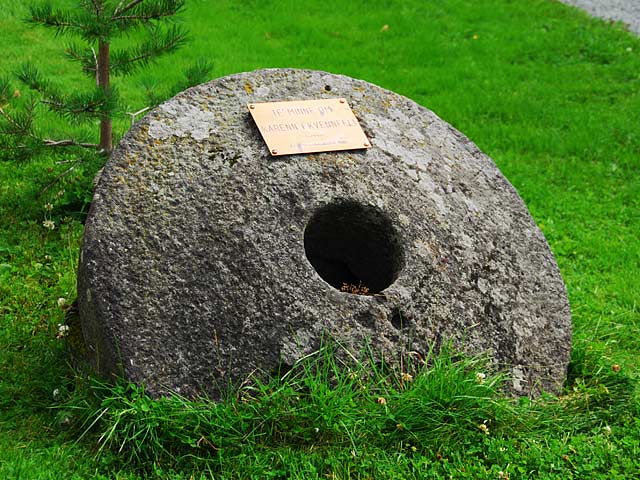
A millstone at the Selbu church with the inscription (in the local dialect) "In memory of the men on Kvennfeli" (i.e. The Mill(stone) Mountains)
I apologize that the Selbu story is told in the reverse chronological order. It may be noted that the rise of the knitting industry coincided roughly with the decline of the millstone industry. In those days Selbu had it's "millstone" businessmen with networks throughout Norway and to a lesser extent abroad, which was doubtlessly a great advantage when marketing the knitwear.
(2009-08-06)
The Andrew Sisters
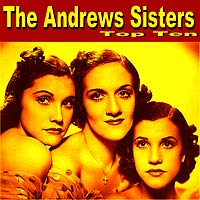
Some interesting people came from Selbu, like Olga (nickname Ollie) Pedersdatter Sollie who married Peter Andrews (born Petros Andreou in Greece) and became the mother of the three Andrews Sisters. Olga was born April 1887 and May 1888 her parents (Soffi Pedersdatter née Haave and Per Pedersen Sollie) emigrated to U.S.A. with their five kids. She died 3 July 1948, when her three daughters were at the height of their career.
♫ Drinkin' Rum and Coca Cola, go down Point Cumana Both mother and daughter, workin' for the Yankee dollar... ♫
Belle Gunness
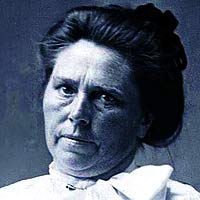
Sorry, I also have to mention Belle Gunness a.k.a. Lady Bluebeard, the serial killer. The number of victims is unknown; one estimate says 25–40. Belle was born 11 November 1859 in Selbu as Brynhild Paulsdatter Størset. In her youth she evidently had some very bad experience with a man. She emigrated to U.S.A. on her own in 1881. Her year of death is unknown: On 28 April 1908 her house burnt down and the bodies of her three poisoned children was found in the ruins, together with a headless female body. The obviously pragmatic police concluded that this was the body of Belle Gunness, although the size seemed wrong.
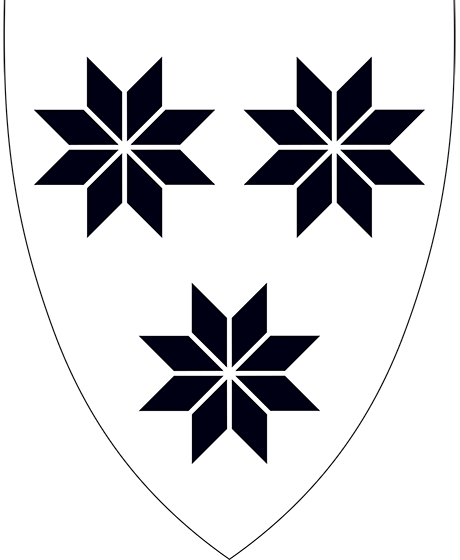
The Selbu coat of arms
